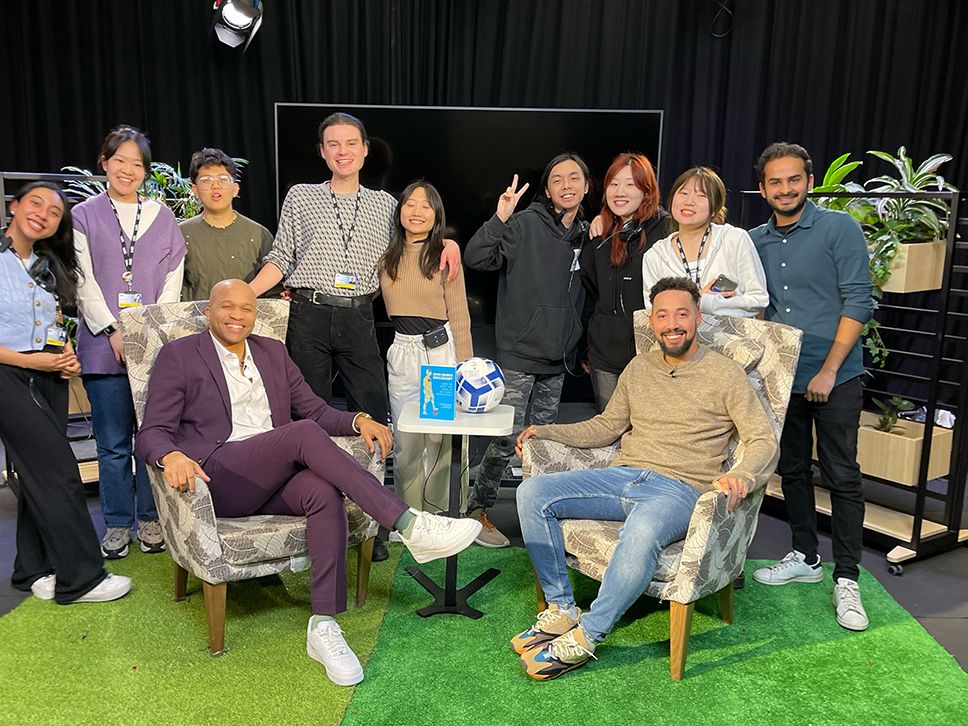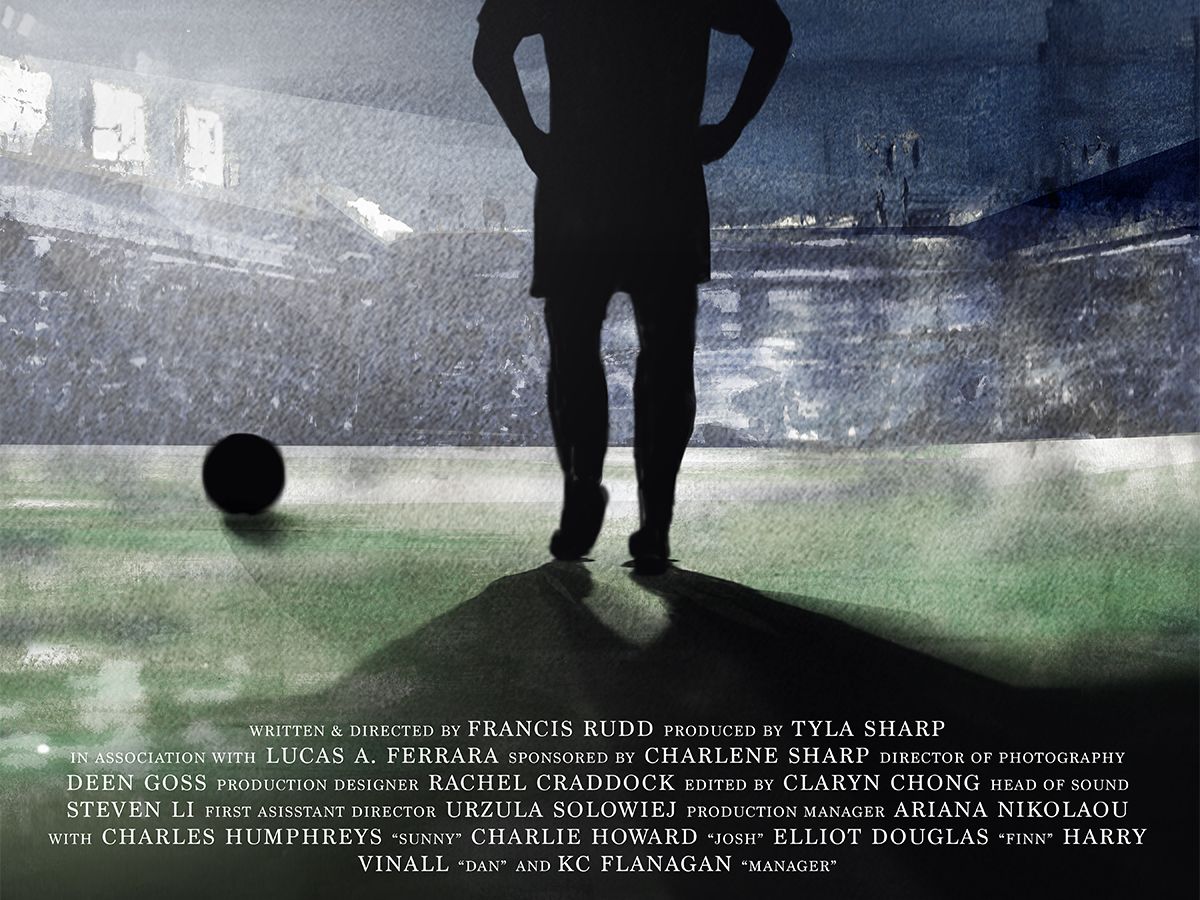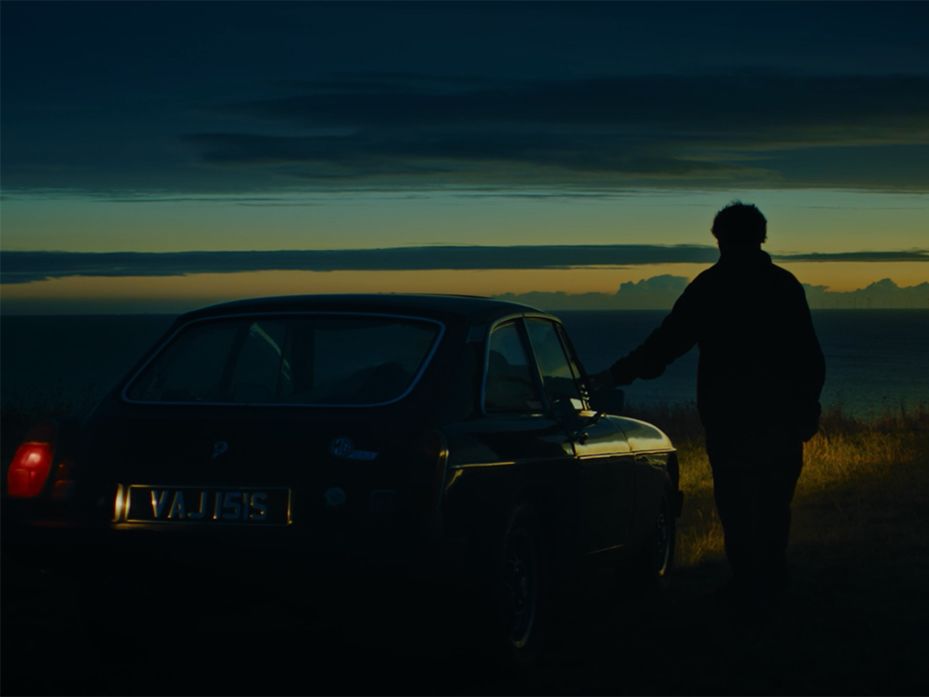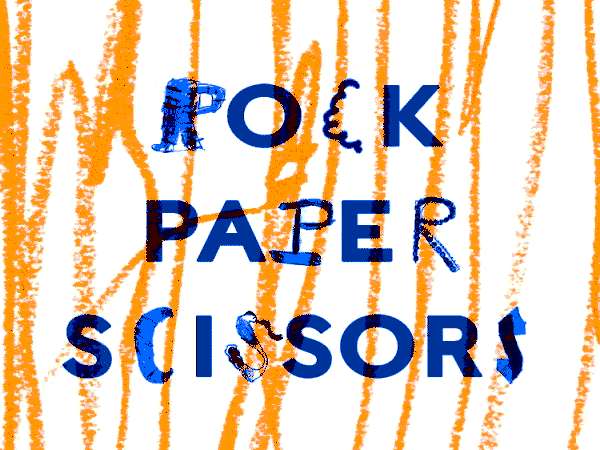
BA (Hons) Sound Arts students explore contemporary art practice and sound cultures through guest lecture series
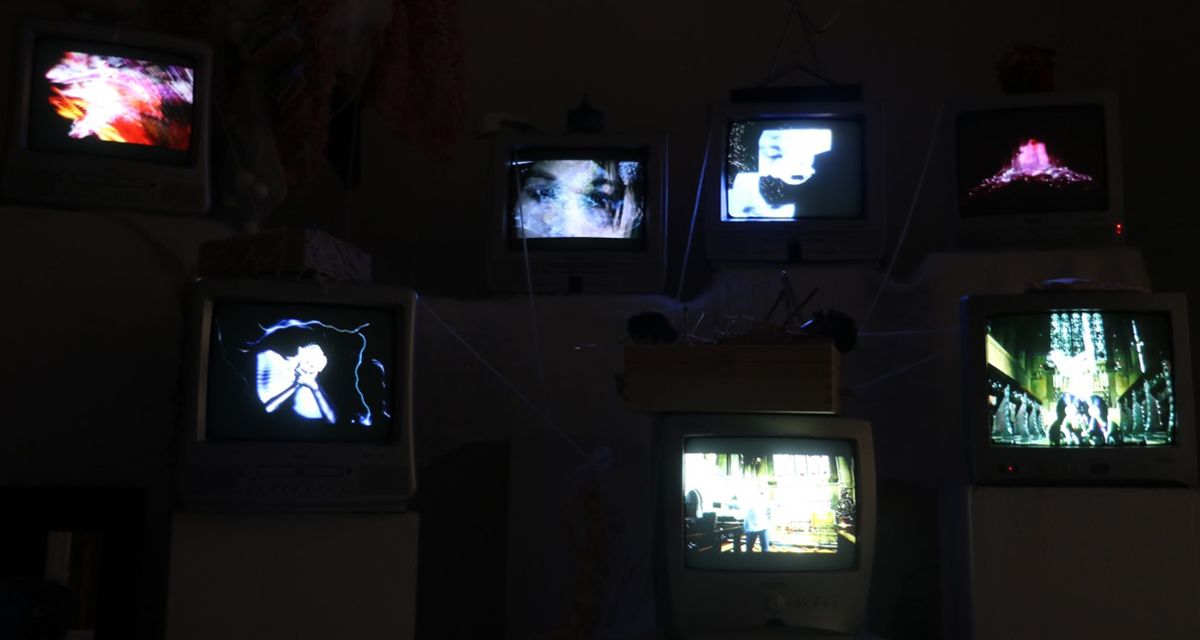
- Written byChloe Murphy
- Published date 26 January 2024

Developing as a creative practitioner not only involves building your own skillset and portfolio, but also growing your awareness of the broader disciplinary landscape.
At London College of Communication (LCC), students across our Schools of Design, Media and Screen are connected to established creatives, with opportunities to make connections and gain insights from some of the leading figures in their fields.
Based within our Sound and Music programme, our Sound Arts community regularly hosts a Guest Lecture series that invites sound artists and musicians to share and discuss their work. Curated and convened by Dr Annie Goh, Course Leader for BA (Hons) Sound Arts, in partnership with Creative Research into Sound Arts Practice (CRiSAP), the series brings together undergraduate, postgraduate and research students to learn more about contemporary developments in diverse practice spanning a range of different genres, forms and areas of specialism.
In the past, speakers have included figures such as:
- Shanti Suki Osman
- Joel Stern
- Annea Lockwood
- Pedro Oliveira
- Sandra Kazlauskaitė
- Nzinga Soundz
- Ximena Alarcón-Diaz
- Chooc Ly Tan
- Jaap Blonk
- Lucia Farinati
- Julian Henriques
- Louise Ashcroft
- Moushumi Bhowmik.
The Guest Lecture series is also open to students and staff across all UAL Colleges, and to a small number of external guests – enhancing LCC’s connections across the University, and demonstrating the impact of sound arts to our wider community.
We caught up with Year 3 student, Juice Cui, about their experience of taking part in the Guest Lecture series, along with navigating the fourth dimension of art, the importance of ‘sonic knowledge’ and the language of perception.
Kleinsche Flasche | Juice Cui
Tell us about your creative practice.
My artistic trajectory has encompassed a broad spectrum of creative works, but was initially rooted in 2D classical art forms such as paintings and illustrations. This interest then evolved into an exploration of 3D artistic expressions, notably in contemporary short films and sculptures. My journey has now transcended into the realm of spatial sound design and digital media manipulation, effectively navigating the fourth dimension of art.
At the core of my artistic ethos lies a profound emphasis on the fusion of acoustic instrument sounds and dance improvisation seamlessly integrated within the avant-garde framework of contemporary audio-visual communication.
One of my key projects, Transmission of Information, is an audio-visual exploration of how information is conveyed and transformed across 7 human senses - hearing, smell, taste, vestibular sense, sight, touch, and proprioception - and their interconnection with societal structures. This project comprises 7 sound installations and 7 televisions, each depicting a dancer associated with a specific sense, and a 20-minute octophonic composition centered on acoustic improvisation.
How did you first become interested in the field of sound arts?
“I saw all my colours in spirit, before my eyes. Wild, almost crazy lines were sketched in front of me.” —Wassily Kandinsky
My initial fascination with sound arts was ignited by Wassily Kandinsky’s masterpieces, Composition III (1923) and Yellow-Red-Blue (1925). Kandinsky's artistic expression, particularly his use of geometric shapes and the belief that these shapes could evoke auditory sensations, deeply resonated with me.
In Yellow-Red-Blue, the overlapping elements and their dichotomy - which I interpreted as representing speech and thought - are designed to elicit a spectrum of emotions in the observer, creating a palpable vitality. Furthermore, the innovation and narrative depth of graphic scores captivated my attention, leading me to compose an audio paper on graphic score format, which is soon to be archived in the LCC Sound Collection.

Why did you decide to study sound arts at LCC?
Initially, I thought about studying Illustration and Visual Media, as my engagement with painting and illustration dates back to my kindergarten years. I was inspired by LCC’s ethos of experimental practice and critical thinking coupled with opportunities for collaborative technical workshops and studio work.
Venturing into a new dimension away from that was daunting, yet I realised my connection with sound was established long before. As a child, I was intrigued by the distinct sounds produced from breaking plates and bowls of various materials. My voiceover work, including dubbing for cartoons and audio dramas, as well as broadcasting poetry and magazines, further cemented my connection with sound. This amalgamation of my musical background and voiceover experience has shaped my aspiration to contribute to the audible children's pop-up book industry.
LCC’s BA (Hons) Sound Arts course, which is known for fostering curiosity and experimentation in sonic arts for over 2 decades, offered me the platform to delve into different areas of sound arts and design, including fine art, installation, creative coding, interactive media, and experimental music.
[And then I realised I need sound…I need sonic knowledge…
I have voice… In the future someone can hear you…]
[Here is where my dreams begin…]

What is the Sound Arts Guest Lecture series, and why is it an important resource for current students?
The Sound Arts Guest Lecture Series is designed specifically for sound arts students, and provides us with access to an array of professional artists, composers, sound designers and writers.
These sessions offer invaluable insights into the diverse themes, methodologies, and forms of contemporary art practice and sound cultures. The Q&A segments often lead us to contemplate our future roles as sound artists in the industry and our connection to the world post-graduation.
Who have been some of the notable people that have featured throughout the series?
NikNak is a multi-disciplinary artist who regularly pushes the boundaries on what turntables are capable of. As a DJ, turntablist, sound artist, composer, producer, tutor, sound engineer and radio presenter, she is passionate about experimenting and sharing her music tastes to diverse audiences, delivering engaging sessions with students, and running events like Dub Sirens and Melanin. She was also the first Black Turntablist to win an Oram Award in 2020.
Richard Phoenix is an artist who paints, draws, composes and makes music to explore the ways in which people can be supported to come together. Fascinated by people, develops work that's mostly figurative, and investigates how our communication with each other can uncover how the world is organized. Richard describes his work as ‘brilliant, liquid and [embracing] defect to reflect the characteristics on the planet that I need to see myself’.
Cathy Lane was also a really important guest for the series. As a composer, sound artist, lecturer and researcher, Cathy has been a huge influence on sound arts at LCC, and is Director of UAL’s Creative Research into Sound Arts Practice (CRiSAP) research centre. We learned how her practice reflects a deep engagement with the women’s movement, community activism and a DIY ethos, and how her collaborations span a wide range of fields such as including cinematography with Cathy Greenhalgh, textile art with Tessa Brown, and choreography with the late Rosemary Butcher.

What have been some of the key insights that guest lecturers have shared with you?
On a personal level, I think the most striking thing overall has been a broad insight into the diverse conceptualisation of being an artist. The trajectory of a sound artist isn’t confined to a singular path focused solely on sound; rather, it can originate from a fine art background where sound serves as an embellishment, a mode of expression or the primary inspiration.
Collectively, the guests’ perspectives on crafting manifestos, creative diversity, critical thinking and sound as a political and social language in relation to the world have been both practical and inspiring.
What have been some of your major highlights of the Guest Lecture series?
4 areas really stick out for me:
- Diversity: The invited artists have shared diverse backgrounds in both living and working.
- Unexpected forms: Some artists would bring their hand-made instruments, some would perform their work live, while others would share the films or multimedia works they’d made.
- Experimental workshops: Some artists offered a practical workshop where we were able to learn more about improvisation, experimental electronica and DIY electronic music.
- Inspiration and connection: As a whole, the series has really helped us to develop our portfolios while allowing us to connect with more established artists.

What have you most enjoyed about your experience as an LCC student so far?
I’ve really loved how comprehensive the facilities are. Spaces like the 3D Workshop have been instrumental in my creation of wooden music boxes and robotic arms.
The Sound and Music facilities, especially the Performance lab, serve as multifunctional spaces for teaching, live performances, improvisation, experimentation, multi-channel mixing, and recording, and have been pivotal in my foray into spatialisation works.
Coming from a non-sound arts background, I attribute the success of my progress to the encouragement, patience, practical advice and engaging lessons provided by my tutors. I also think the helpfulness of the technicians and the accessibility of a diverse range of recorders, microphones, and synthesizers have been invaluable too.
What tips would you give to prospective students who are interested in exploring the world of sound arts?
Not only to research and listen widely, but also to feel the world and focus on present sensations.
My exploration through the field of sound arts has been driven by a perception-oriented approach, rather than a purely visual language-focused one. It’s important to remember that sound arts opens up a realm where sensory perception takes precedence, providing unique and innovative experiences for audiences and creatives alike.
Related links:
- Find out more about the Sound Arts Guest Lecture Series.
- Explore our BA (Hons) Sound Arts course.
- Learn more about the Centre for Research into Sound Arts Practice.
